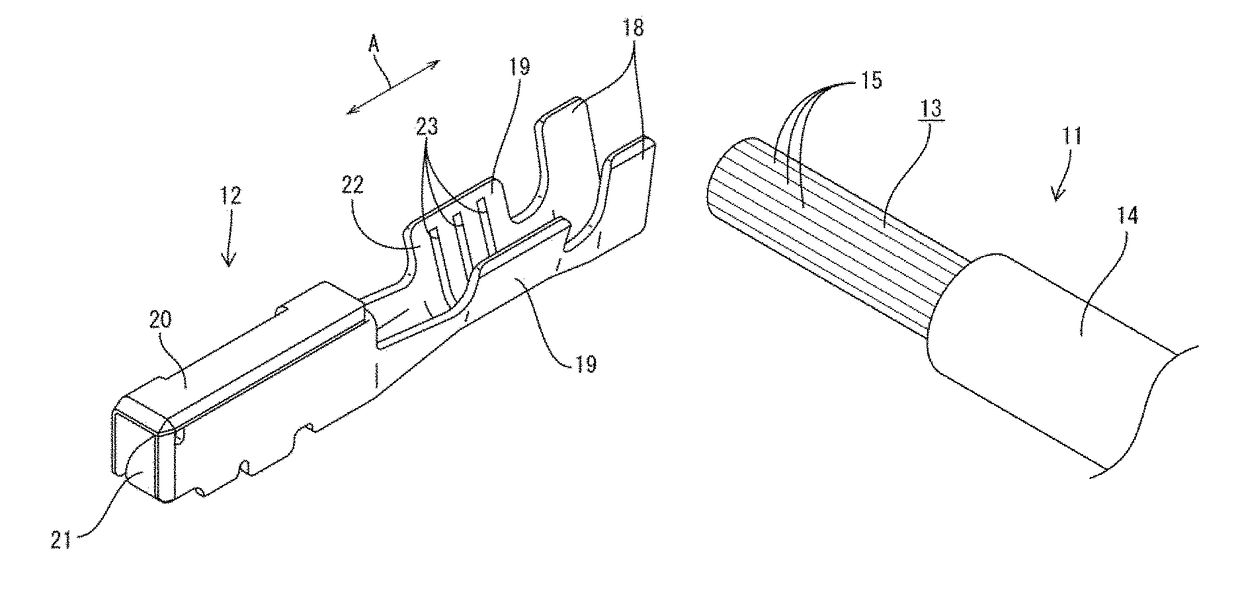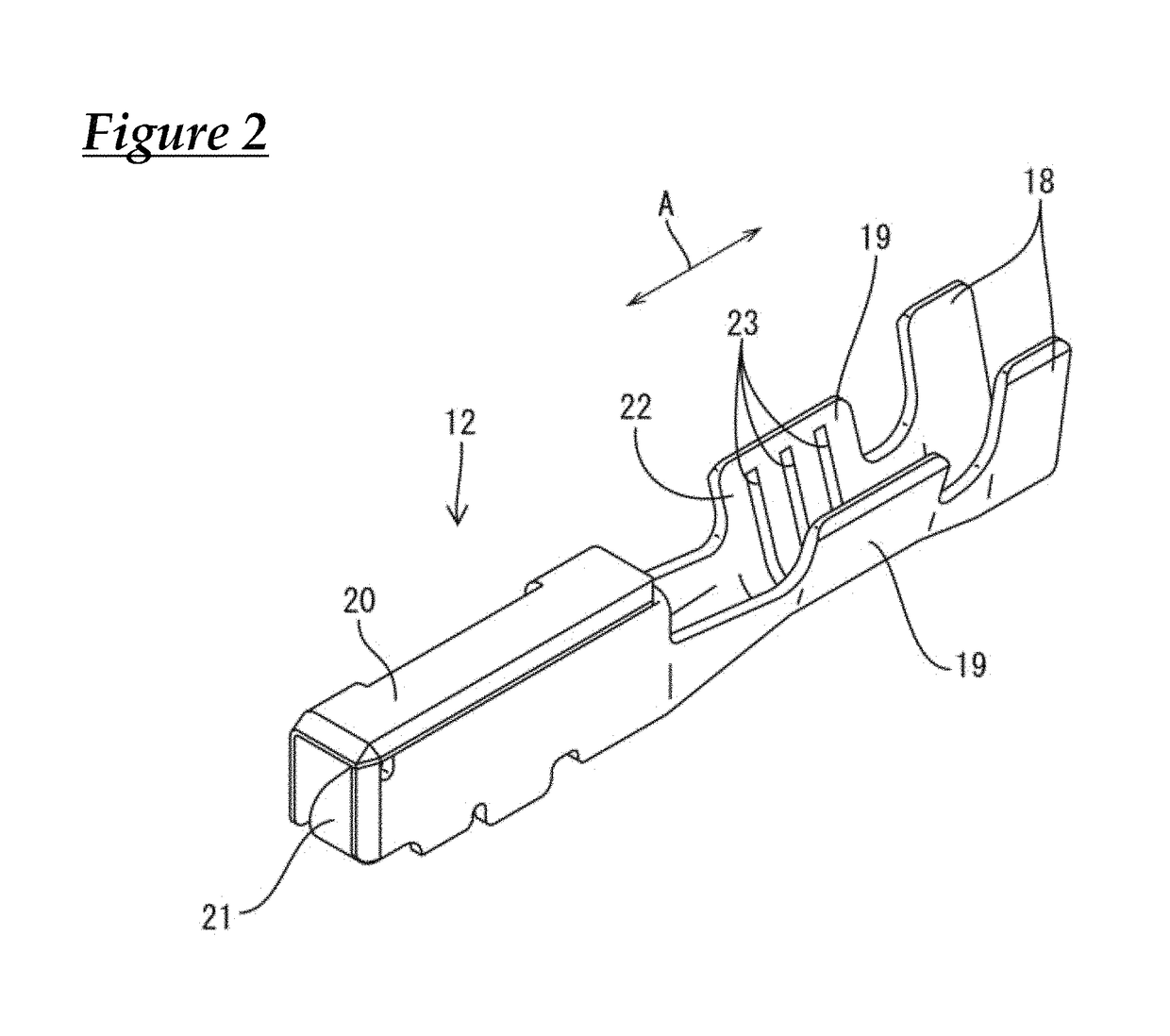Wire with terminal and manufacturing method therefor
a technology of terminals and electric wires, which is applied in the direction of connection contact materials, line/current collector details, and permanent deformation connection, etc., can solve the problems of electrical resistance between the electric wire and the terminal that cannot be fully cured, and the surface of the strand wire may not be sufficiently roughened, so as to reduce the electrical resistance between the electric wire and the terminal, and ensure the connection
- Summary
- Abstract
- Description
- Claims
- Application Information
AI Technical Summary
Benefits of technology
Problems solved by technology
Method used
Image
Examples
second embodiment
[0174]A terminal-attached electric wire 32 according to a second embodiment of the present design will now be described with reference to FIG. 21. The terminal according to the present embodiment is a so-called splice terminal 30 (an example of the terminal) which does not include the connection portion 20. As illustrated in FIG. 21, the splice terminal 30 is configured such that, when two core wires 13 of the electric wires 11 are connected, the insulation coating 14 is peeled at the end of one of the electric wires 11 to expose the core wire 13. With respect to the other electric wire 11, the insulation coating 14 is peeled at the intermediate portion to expose the core wire 13. Each of the exposed two core wires 13 is crimped by one of a pair of wire barrels (an example of the crimp portion) 31.
[0175]In the present embodiment, in the state where the two core wires 13 of the electric wires 11 are crimped by the wire barrels 31, 20 or more strand wires 15 are crimped on the wire ba...
third embodiment
[0176]A terminal-attached electric wire 53 according to a third embodiment of the present design will be described with reference to FIG. 22. From the end of the electric wire 11, the insulation coating 14 is peeled only by a predetermined length, whereby the core wire 13 is exposed from the tip-end portion of the insulation coating 14. On the outer periphery of the core wire 13, the wire barrels 19 are crimped.
[0177]In the core wire 13, a primary compressed region 50 is formed in which the core wire 13 is compressed by, for example, pinching the core wire 13 with a pair of jigs and applying ultrasonic vibrations to the core wire 13.
[0178]As illustrated in FIG. 22, the wire barrels 19 are crimped in a region including the primary compressed region 50. Of the core wire 13, a region of the primary compressed region 50 that has been compressed by the application of ultrasonic vibrations which has further been compressed by the wire barrels 19 provides a secondary compressed region 51. ...
PUM
 Login to View More
Login to View More Abstract
Description
Claims
Application Information
 Login to View More
Login to View More - R&D
- Intellectual Property
- Life Sciences
- Materials
- Tech Scout
- Unparalleled Data Quality
- Higher Quality Content
- 60% Fewer Hallucinations
Browse by: Latest US Patents, China's latest patents, Technical Efficacy Thesaurus, Application Domain, Technology Topic, Popular Technical Reports.
© 2025 PatSnap. All rights reserved.Legal|Privacy policy|Modern Slavery Act Transparency Statement|Sitemap|About US| Contact US: help@patsnap.com



